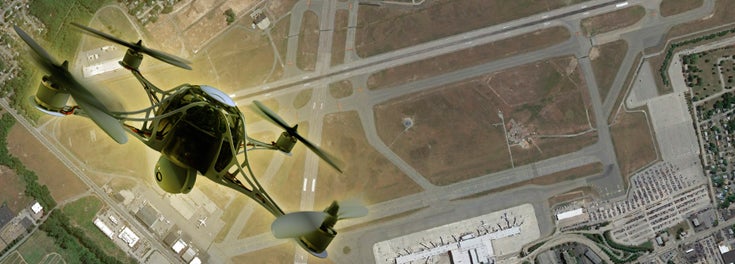 Engineering students at the University of Rhode Island are really flying. For the second year in a row, they won a national collegiate competition to boost the safety of U.S. airports. They beat out students from across the country in the Federal Aviation Administration’s highly selective contest to design technologies to improve airport operations.
Engineering students at the University of Rhode Island are really flying. For the second year in a row, they won a national collegiate competition to boost the safety of U.S. airports. They beat out students from across the country in the Federal Aviation Administration’s highly selective contest to design technologies to improve airport operations.
The students invented a drone detection and tracking system—called Eye in the Sky—to address the problem of drones colliding with aircraft after entering the no-fly zones around airports. Using radio frequency identification tags, GPS and wireless communication, the students created a solar-powered system that not only alerts airport officials about approaching drones so pilots can be informed, but it also warns drone operators when their vehicles enter the no-fly zone.
Because this is such a new issue, there really aren’t any other ways that have yet been developed to address this growing problem. At the moment our project is one of the only methods to assist the FAA.
Four students who graduated in May—Krista Brouwer, Tom Cottam, Catherine LiVolsi and Steve Pratt, all mechanical engineering majors under the supervision of Professor Bahram Nassersharif—invented the system during their senior capstone design course. The yearlong course requires students to solve a real-world problem with a viable product. The students studied the topic, sought advice from officials at the FAA and the Rhode Island Airport Corp., and designed, built, and tested a prototype.
“Because this is such a new issue, there really aren’t any other ways that have yet been developed to address this growing problem,” said Catherine, who recently started a job at the Naval Undersea Warfare Center. ” At the moment our project is one of the only methods to assist the FAA.”
“Our system provides a means for increased situational awareness for air traffic controllers and pilots to better understand when and where drones may be flying during the most critical parts of flight—takeoff and landing,” added Steve, who is working toward a career designing rides at Disney theme parks around the world.
The team travels to Washington, D.C., this month to present their invention to officials at the FAA, where it is already turning heads. In addition to winning last year’s FAA competition with the creation of a wing-tip collision avoidance system for planes on the airport tarmac, URI engineering teams placed second and third in the competition the prior four years.
Tom was especially excited about winning the FAA competition, because his career objective is to work in the aerospace industry. “I chose this project because it dealt directly with the FAA and meant that I could work with airport officials and solve the problems they’re having,” he said.
Photo credit: iStockphoto.com, Google Earth
